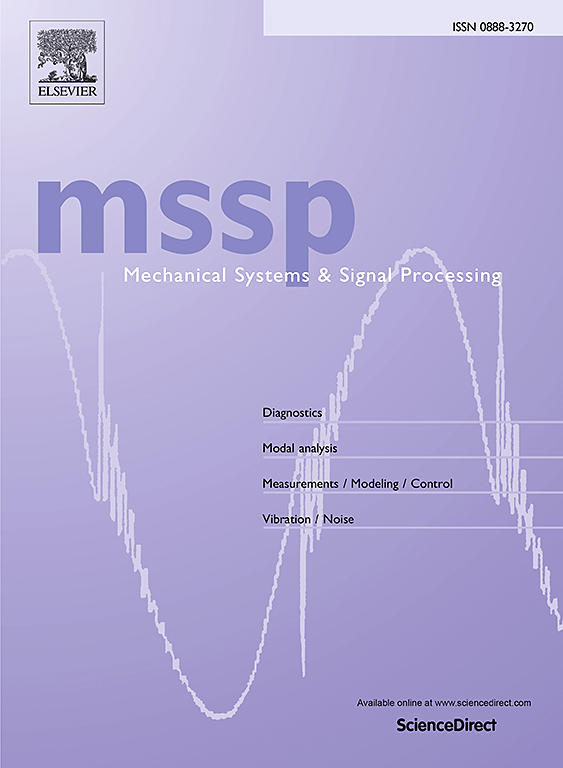通过质量驱动的众包智能手机数据选择优化桥梁模态属性估计
IF 8.9
1区 工程技术
Q1 ENGINEERING, MECHANICAL
引用次数: 0
摘要
最近,众包智能手机-车辆行程(SVT)数据使桥梁模态频率和绝对模态振型的成本效益估算成为可能。SVT数据包括车辆过桥时从智能手机上收集的加速度和GPS测量数据。SVT数据本质上主要受到传感器噪声、车辆动力学和道路轮廓不确定性的污染。这些因素导致嵌入的桥梁动态信息数量的变化,从而影响整体数据质量。本研究提出了一种基于每次行程对已识别的聚合模态形状的影响来量化SVT数据质量的新方法和度量。然后,采用数据驱动模型,利用卷积神经网络对质量参数进行自动检测。该模型在意大利Cadore高架桥上从智能手机收集的900多个异步SVT数据上进行了训练和测试。结果表明,该方法可以提高识别模态振型的质量,将盲聚集时的0.8模态保证准则提高到模型排序时的0.97,并消除了低质量的行程。由于存在多种噪声源,确保众包数据的质量控制至关重要,丢弃错误的数据集可以显著提高桥梁的动态特性识别。本文章由计算机程序翻译,如有差异,请以英文原文为准。

Optimizing bridge modal property estimation via quality-driven crowdsourced smartphone data selection
Recently, crowdsourced smartphone-vehicle trip (SVT) data has enabled cost-effective estimation of bridge modal frequencies and absolute mode shapes. SVT data includes acceleration and GPS measurements collected from smartphones within vehicles as they cross the bridge. The SVT data is inherently contaminated mostly with sensor noise, vehicle dynamics, and road profile uncertainties. These factors cause variability in the amount of embedded bridge dynamic information, thereby affecting the overall data quality. This study presents a novel method and metric to quantify the SVT data’s quality based on each trip’s impact on the identified aggregated mode shape. Then, a data-driven model is used to detect the quality parameter automatically using the convolutional neural network. The model is trained and tested on over 900 asynchronous SVT data collected from smartphones over the Cadore viaduct bridge in Italy. The results demonstrated that this method could improve the quality of an identified mode shape, increasing the modal assurance criterion of 0.8 in blind aggregation to 0.97 with model sorting and eliminating low-quality trips. Ensuring the quality control of crowdsourced data is crucial due to multiple noise sources, and discarding erroneous datasets can significantly improve dynamic characterization identification of the bridge.
求助全文
通过发布文献求助,成功后即可免费获取论文全文。
去求助
来源期刊

Mechanical Systems and Signal Processing
工程技术-工程:机械
CiteScore
14.80
自引率
13.10%
发文量
1183
审稿时长
5.4 months
期刊介绍:
Journal Name: Mechanical Systems and Signal Processing (MSSP)
Interdisciplinary Focus:
Mechanical, Aerospace, and Civil Engineering
Purpose:Reporting scientific advancements of the highest quality
Arising from new techniques in sensing, instrumentation, signal processing, modelling, and control of dynamic systems
 求助内容:
求助内容: 应助结果提醒方式:
应助结果提醒方式:


